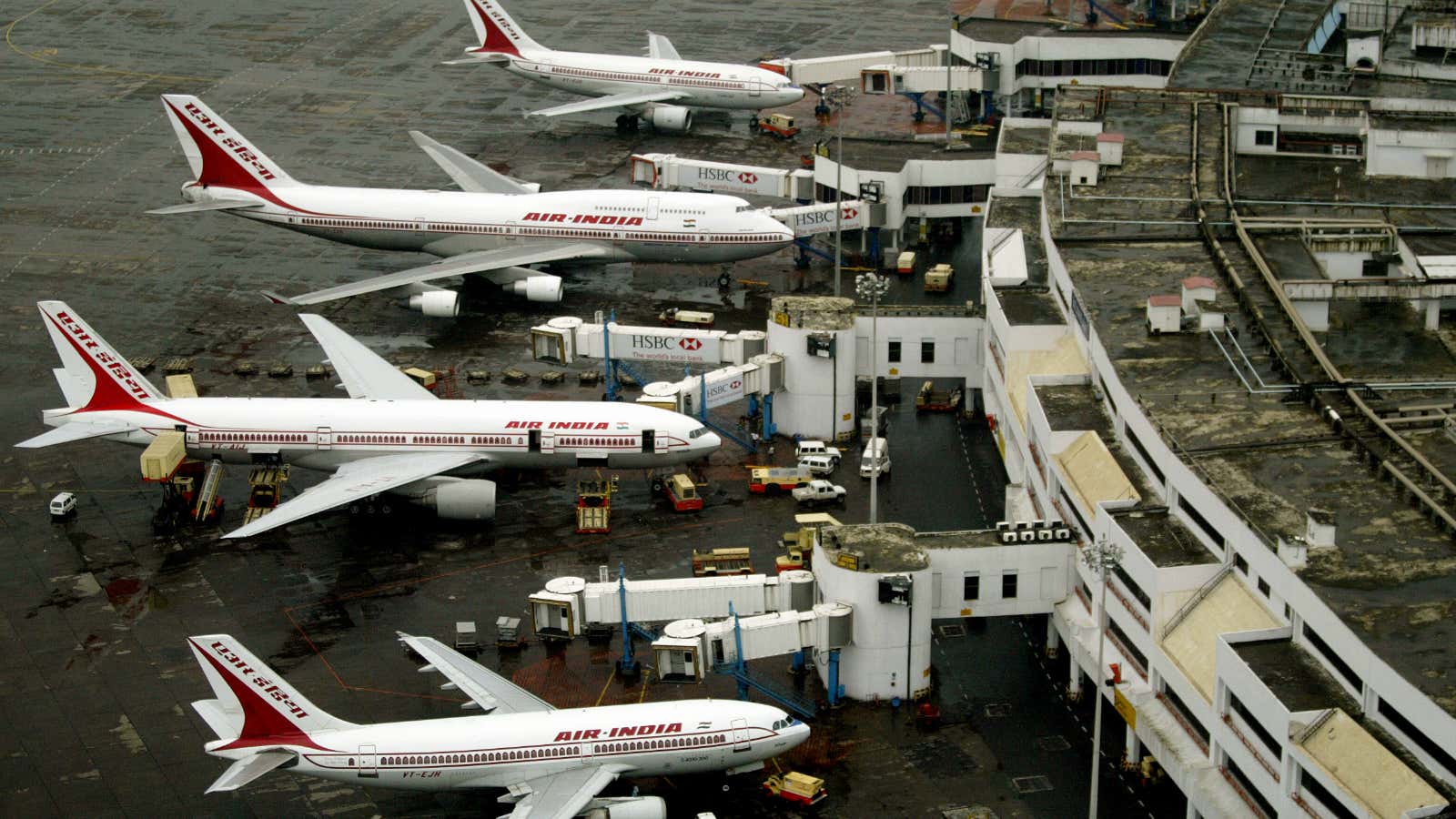The failure to sell Air India could further drain taxpayers’ money as the government tries to keep it airborne.
On Wednesday (Sep. 26), union minister of state for civil aviation Jayant Sinha said discussions for a bailout package were in an advanced stage. “We are going through the government approval process,” Sinha said without outlining the contours of the deal nor specifying the quantum of money the government plans to infuse.
Only in July this year, the government had sought parliament’s approval to pump in Rs980 crore ($135 million) into Air India. At the time, a distress signal was sent to the finance ministry, saying the firm required Rs500 crore urgently, failing which it would default on its loan payments.
The Maharajah’s divestment plans were torpedoed in June by its huge loan book that made it unattractive to potential suitors.
Debt trap
The company has a total debt of around Rs52,000 crore, of which Rs22,000 crore are loans pertaining to buying of aircraft and the rest comprises working capital loans and other liabilities.
“Air India is a national carrier. Unlike other companies, it cannot take an aircraft on lease. Government-owned entities cannot lease. So its loans will always be there. The advantage that Air India has is it can amortise (or defer payments to a later date) those loans over a period of time,” said Mark Martin, founder and CEO of aviation consulting firm Martin Consulting.
The debt notwithstanding, Air India is an asset-rich airline like no other. After divestment plans failed, the government had then said it would sell non-core assets like land and buildings.
The government also said it is considering ways of separately selling the national carrier’s subsidiaries, handling engineering, transport and allied services. The idea behind selling off Air India in bits and pieces is to minimise the burden of debt on prospective buyers.
“The debt incurred to buy aircraft has to be taken over by any company that buys Air India. If you are getting the assets, you cannot say no to not bearing the corresponding loan,” said Asish Nainan, research analyst with CARE Ratings.
Prospective bidders who were keen on Air India included the now beleaguered full-service airline Jet Airways and InterGlobe Aviation, the company that runs the budget carrier IndiGo. Both subsequently quit bidding.
Since then, interest in the aviation sector has only waned further given the macroeconomic situation.
A sector in flux
The Indian aviation sector, in general, is in the doldrums as it is trying to overcome the blows from rising oil prices and a weakening rupee. On Wednesday (Sept. 26), the government imposed a 5% customs duty on aviation turbine fuel which is expected to tighten the screws on airlines’ profitability. Most airlines have reported losses or have seen a huge dip in profits in recent quarters.
Air India’s projected net loss for 2017-18 was estimated at over Rs3,500 crore, former aviation minister Ashok Gajapathi Raju had told parliament in January.
In such a precarious situation, finding a suitor is a tough task. Until then, the Maharajah’s maintenance will remain a significant strain on the government’s coffers.
